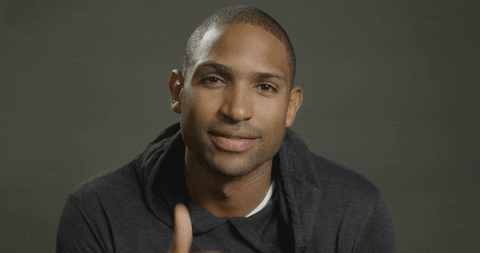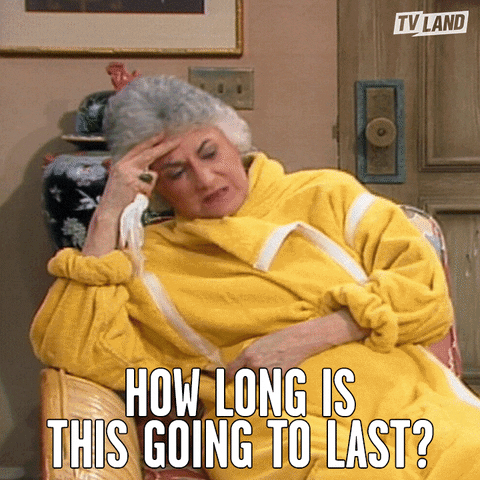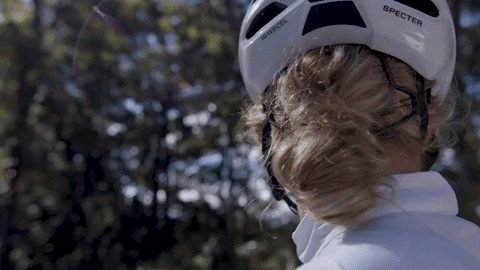Triathlon Training Plan for Your First (or 10th) Triathlon
Our content strives to support, inform, and motivate you to meet your health goals. We want to be your trusted source of expert- and science-backed info dispensed in simple, actionable ways. Read our Editorial Guidelines.
So, you’re thinking of training for a triathlon. Sweet! This sport is extra cool because it’s actually a multisport. A triathlon comprises swimming, biking, and running, in that order.
For those who enjoy each of those activities (and/or just want to get better at them), training for a triathlon can provide fantastic aerobic exercise while making you feel like an Olympic athlete.
Whether you’re a beginner triathlete about to try your first triathlon or a triathlete looking to improve your speed, you’ll benefit from some guidance. Read on to learn about the different types of triathlons, how long to expect a triathlon training plan to take, how to create your own triathlon training plan, and how a triathlon coach can help.
The Five Kinds of Triathlons

While every triathlon will involve a combination of swimming, biking, and running as part of a larger race against other athletes, the distance of each activity varies depending on the type of triathlon. If you’re interested in registering for an official triathlon, the first thing to decide is which length is the most appropriate for you.
Super Sprint Triathlon
This is the shortest triathlon, ideal if you’re doing a triathlon for the first time:
Swim: 500 meters or 0.3 of a mile (10 laps in an Olympic-sized pool)
Bike: 10k or 6.2 miles
Run: 2.5k or 1.6 miles
This still isn’t exactly easy. Running 1.6 miles might not sound like that big a deal, but just after swimming and biking, your legs will feel like bricks. (This is the reason for the name “brick workout” given to any workout involving two of these sports in immediate succession.)
Sprint Triathlon
Here’s how a regular sprint triathlon can work:
Swim: 750 meters or 0.46 of a mile (15 laps in an Olympic-sized pool)
Bike: 20k or 12.4 miles
Run: 5k or 3.1 miles
The regular sprint triathlon has biking and running distances that are both twice as long as the super sprint, but the swimming distance is just 1.5 times as long. This could be appropriate for beginner triathletes who are current runners or cyclists. For instance, if you regularly run 5k or go for 13 mile bike rides several times a week, you’re already doing one third of this race.
Olympic Triathlon
As the name suggests, an Olympic triathlon is the length that is used in the Olympics:
Swim: 1.5k or 0.93 of a mile (30 laps in an Olympic-sized pool)
Bike: 40k or 12.4 miles
Run: 10k or 6.2 miles
Even this may be appropriate for beginners who are already endurance athletes and are comfortable running, biking, and swimming these kinds of distances. All distances are double those of the sprint triathlon.
Half Ironman Triathlon
A half Ironman Triathlon could be appropriate for seasoned athletes who have done triathlons or similar athletic competitions before.
Swim: 1.93k or 1.2 miles (39 laps in an Olympic-sized pool)
Bike: 90k or 56 miles
Run: 21k or 13.1 miles
Note that the running distance is a half marathon, and remember that you’re doing all three at once. This isn’t to discourage beginners, but beginner triathletes may want to try a shorter triathlon to start before slowly working towards longer ones.
Ironman Triathlon
The full Ironman is the longest distance triathlon, and the ultimate endurance sport. All race lengths are double the half Ironman, meaning the running distance is a full marathon.
Swim: 3.9k or 2.4 miles (78 laps in an Olympic-sized pool)
Bike: 180k or 112 miles
Run: 42.2k or 26.2 miles
Beginner triathletes may aspire to complete an Ironman Triathlon someday, but this will likely take years of preparation.
How Long Training Takes

The number of weeks of training you’ll need will depend on the type of triathlon you’d like to do, as well as your current levels of fitness. Even if you have little to no experience running, biking, or swimming, you can still ease your way into a training program – but you’ll need to build much more time into your training schedule.
Base Phase
The base phase is the amount of time it takes you to get into good enough shape to begin training for a triathlon. If you’re brand new to all three sports, you’ll want to plan a long base phase, around 12 weeks, to build your aerobic fitness to a level where you’ll be able to try at least two endurance sports in a row.
A base phase focuses most on whichever sport(s) you have the least experience with. Aiming for 3-4 training sessions per week is a good idea. Focus those sessions on a combination of runs, bike rides, and swims, but emphasize whatever needs the most improvement.
If you are in the habit of doing long-distance bike rides, runs, and/or swims, and you’ve been doing these workouts for at least 12 weeks, you’ve likely already built enough of a base for your first race. You might just want to devote a couple of weeks to any of the three sports you’re less than confident about.
Pre-Competition Phase
Beyond the base phase, you’ll need another 8-16 weeks or so of training before doing an official triathlon, depending on which kind of triathlon you’re interested in.
This phase of training is going to be much more high intensity and demanding than the base phase. As much as possible, it’s generally a good idea to limit other kinds of demanding work during this time.
So, when considering signing up for official triathlon competitions, remember you’ll need to give yourself at least a couple of months (or potentially up to half a year or longer) to prepare.
Competition Phase
If you’ve just signed up for one triathlon, this phase ends after race day. However, for experienced triathletes who do multiple competitions within one season, this phase lasts for the duration of your season – and it’ll be followed by a peak phase and a taper phase. No need to start worrying about those phases unless you become an annual competitor.
How to Create Your Own Triathlon Training Plan

There are many ways to prepare for a triathlon, but they all involve a mix of swim, bike, and run workouts, with occasional brick workouts (bike-run or swim-bike) and built-in recovery time. This means light activity, not a rest day: Walking, stretching, or yoga.
Remember, the length of your training program will depend largely on how long your base phase needs to be.
As you begin your training regimen, remember some of the most crucial components of your training include fueling your workouts with good nutrition and plenty of sleep. Make sure you are eating and sleeping enough, or you won’t make it very far in your program.
Beginner Triathletes
This eight-week plan is highly customizable and ideal for your first sprint triathlon. Use this as a template, adjusting to your ability level as needed. Keep in mind a triathlon coach or personal trainer can help you create a plan that is tailored to you and your specific needs much better than an article.
Weeks 1-4 are mainly about technique, but the activities need not be high intensity. It’s really important to pace yourself during this time, and to listen to your body. Skip a day if you’re too sore, but make up for it when you’re feeling better.
Week 1
Two days: bike rides, 45-60 minutes each
Two days: swimming, 30 minutes per session
One day: running, 30 minutes
One day: active recovery
Week 2
Two days: bike rides, 50-70 minutes
Two days: swimming, 40 minutes
One day: running, 40 minutes
One day: whichever sport needs the most work
One day: active recovery
Week 3
Two days: bike rides, 70-90 minutes
Two days: swimming, 45 minutes
One day: running, 50 minutes
One day: whichever sport needs the most work
One day: active recovery
Week 4
Two days: bike rides, 1-2 hours
Two days: swimming, 50 minutes
Two days: running, 45 minutes
One day: active recovery
Week 5

In weeks 5-8, the goal shifts a bit. Hopefully, our technique has improved during the first four weeks, and we can focus more on building endurance. Technique is still a major focus, but endurance and intensity can increase a bit.
For week 5, plan two days of bike rides, two days of swimming, and one day of running, with two days reserved for active recovery. Aim for swimming workouts to be 30 minutes, bike rides to be 45-70 minutes, and run workouts to be 35 minutes.
Week 6
Prepare the pedals! You’re now doing three bike rides.
Three days: bike rides, 60-90 minutes
Two days: swimming, 45 minutes
One day: running, 45 minutes
One day: active recovery
Week 7
Two days: bike rides, 1-2 hours
One day: swimming, 50 minutes
Two days: running, 30-50 minutes
One day: brick – 1-hour bike ride followed by 10-minute run
One day: active recovery
Week 8
During the last week, your goal is to take it easy to prepare you for the race. On race day, you don’t want to be sore, recovering from a week of incredibly intense workouts.
One day: bike ride, 30 minutes
One day: swimming, 30 minutes
One day: running, 30 minutes
One day: brick – 10-minutes swim followed by 10-minute run
Two days: active recovery
How a Triathlon Coach Can Help You Plan Your Next Triathlon

As we’ve seen, there’s a lot to consider when creating a triathlon training plan. You first need to choose which triathlon is appropriate for you, but you’ll also need to consider your current fitness levels. This is where a triathlon coach or online personal trainer can help.
A good personal trainer who specializes in triathlon training will come up with a training plan tailored to you and your needs, and they’ll also be able to recommend the right running shoes and wetsuits for you. Take this quiz to find the best Kickoff trainer for you.